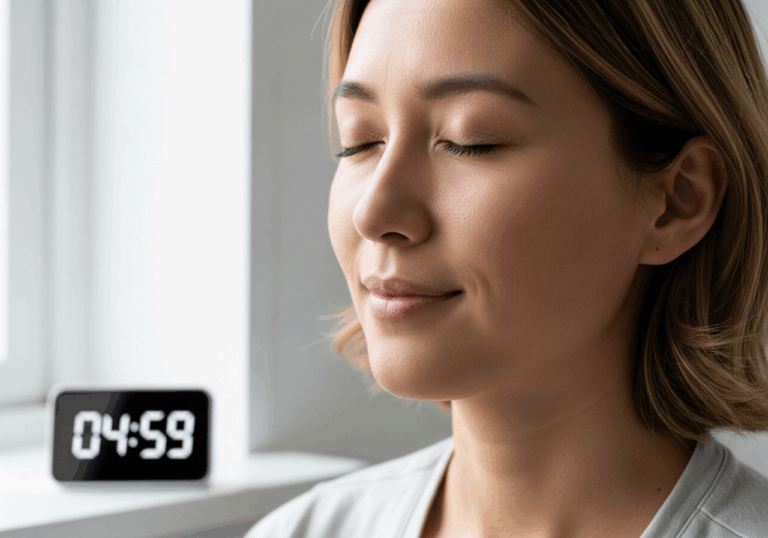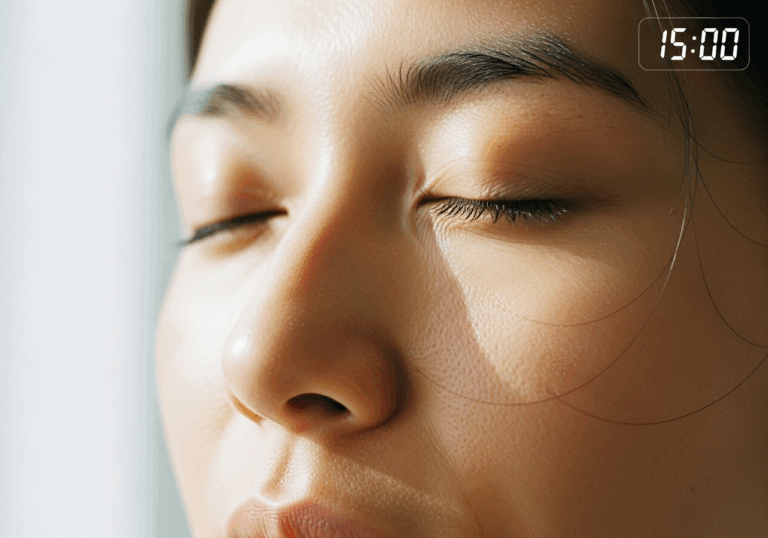Science-Backed Tips
Breath Your Way to Reduced Anxiety
Guided diaphragmatic breathing reduces anxiety in over 70% of cases.
📊 Did you know?
💡 Why It Matters
1️⃣
Structured breath practices can lead to a significant reduction in anxiety, with over 70% of interventions proving effective.
2️⃣
Long-term practice of diaphragmatic breathing can enhance overall mental health and resilience in high-stress environments.
3️⃣
Implementing guided breathing techniques can be a cost-effective strategy for mental health interventions in clinical settings.
✅ Try These Micro-Tips
🎯
Engage in guided diaphragmatic breathing for at least 5 minutes, 3 times a week.
🎯
Seek initial human guidance to learn proper techniques for maximum effectiveness.
🎯
Practice breathing exercises in a quiet, comfortable environment to enhance focus.
🎯
Consider joining a group or class to maintain motivation and consistency in practice.
📚 The study
By analyzing 58 studies and 72 different interventions, the researchers found that a staggering 54 out of 72 interventions were successful in alleviating anxiety when certain conditions were met.
Notably, those practices that avoided a fast-only pace and sessions shorter than five minutes were more likely to yield positive results.
The study highlights the importance of human-guided training, emphasizing that multiple sessions and long-term practice are essential for maximizing the benefits of breath techniques.
This is significant because it demonstrates that structured breath practices can reliably reduce anxiety when implemented correctly.
With over 70% of the interventions proving effective, this research underscores the potential of diaphragmatic breathing as a cost-effective strategy for mental health interventions, particularly in clinical settings.
By incorporating guided breathing techniques into high-stress environments, individuals can enhance their overall mental health and resilience, paving the way for a calmer and more balanced life.
❓ Frequently Asked Questions ❓
Learn more
What is diaphragmatic breathing?
Diaphragmatic breathing is a technique that involves deep breathing using the diaphragm rather than shallow chest breathing. This method promotes relaxation and can help reduce anxiety levels.
How long should I practice diaphragmatic breathing?
It is recommended to engage in guided diaphragmatic breathing for at least 5 minutes per session. Practicing this technique multiple times a week can enhance its effectiveness.
Why is human guidance important in breath practices?
Initial human guidance ensures that individuals learn the proper techniques for diaphragmatic breathing. This foundational support significantly increases the likelihood of achieving effective results.
How effective are structured breath practices for reducing anxiety?
Research indicates that structured breath practices can lead to a significant reduction in anxiety, with over 70% of interventions proving effective. This makes it a reliable strategy for managing anxiety in high-stress environments.
Can diaphragmatic breathing improve mental health?
Yes, long-term practice of diaphragmatic breathing can enhance overall mental health and resilience. It provides individuals with tools to manage stress and anxiety more effectively.
What is the best environment for practicing breathing exercises?
Practicing breathing exercises in a quiet, comfortable environment can enhance focus and effectiveness. A peaceful setting minimizes distractions and allows for deeper relaxation.
How can I stay motivated to practice breathing techniques?
Joining a group or class can help maintain motivation and consistency in practicing breathing techniques. Engaging with others provides support and accountability.
What are the core factors for effective breath practices?
Core factors for effective breath practices include avoiding fast-only pace, ensuring sessions are longer than 5 minutes, and receiving human-guided training. Multiple sessions and long-term practice are also essential for efficacy.
Is diaphragmatic breathing a cost-effective mental health intervention?
Yes, implementing guided breathing techniques can be a cost-effective strategy for mental health interventions in clinical settings. It requires minimal resources while providing significant benefits.
How often should I practice diaphragmatic breathing for best results?
For optimal results, it is advisable to practice diaphragmatic breathing at least three times a week. Consistent practice helps reinforce the benefits and effectiveness of the technique.





